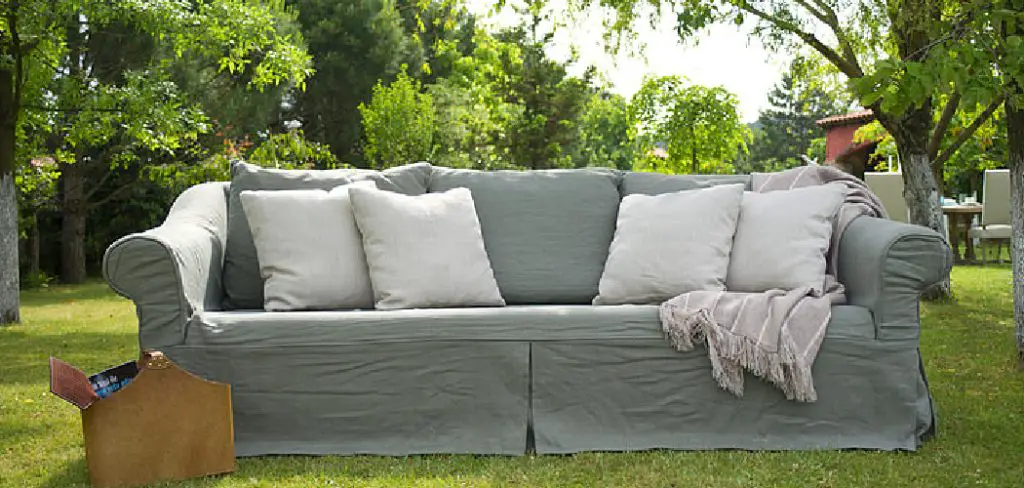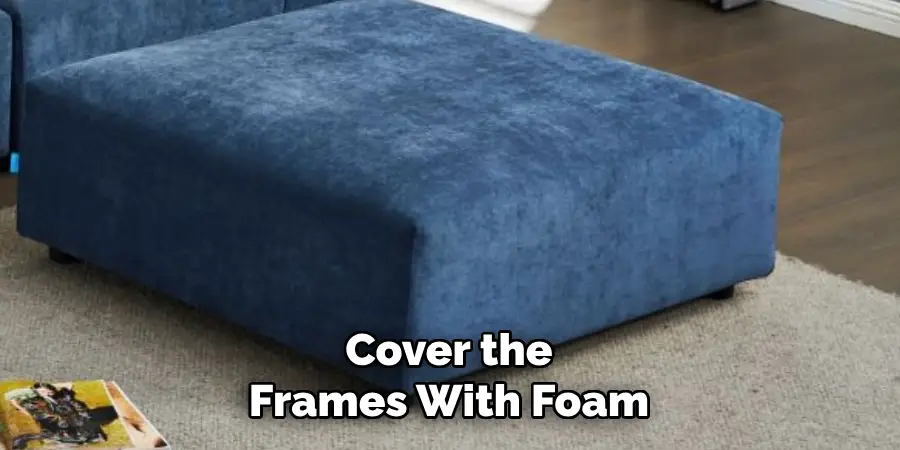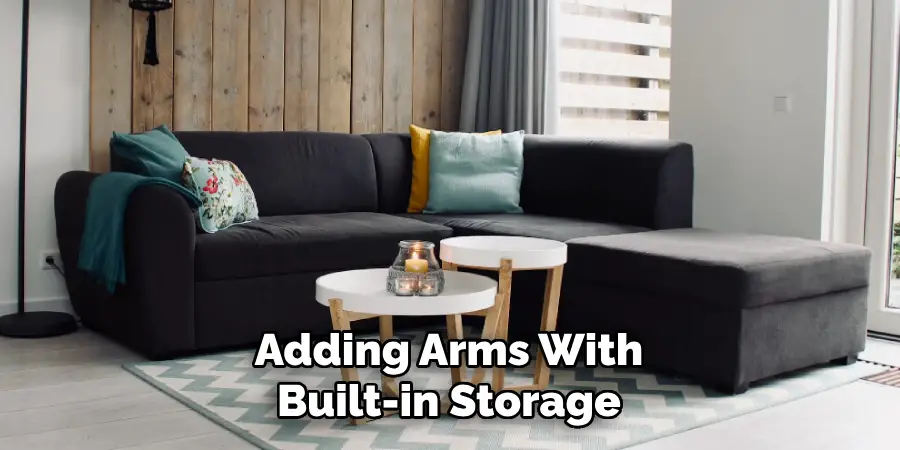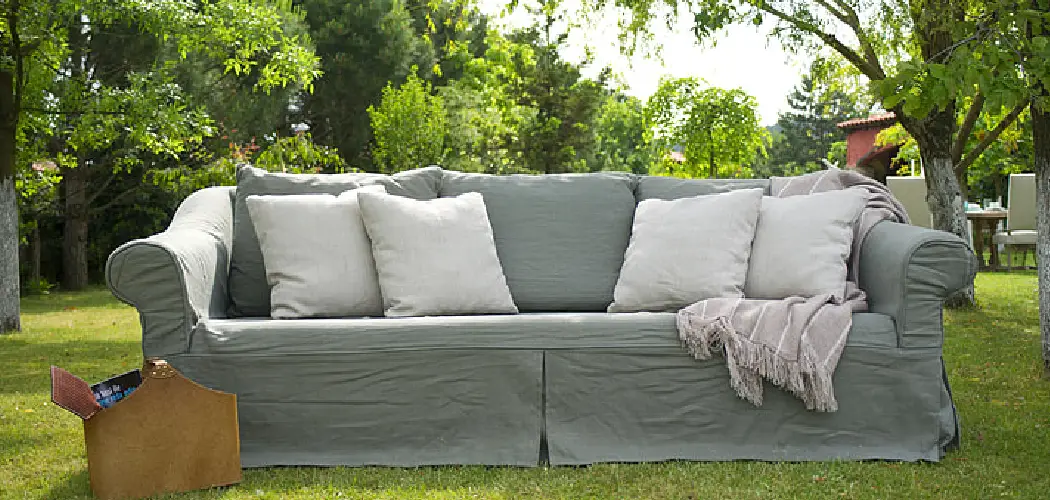Adding arms to an armless sofa can enhance both its functionality and aesthetics, transforming a simple piece of furniture into something more comfortable and visually appealing.

Whether you’re looking to update your living space or simply want to personalize your seating arrangement, this guide will walk you through how to add arms to armless sofa. By following these steps, you will not only improve the comfort of your seating but also potentially extend the lifespan of the sofa by providing additional support and structure.
Why Add Arms to an Armless Sofa
Adding arms to an armless sofa can significantly augment both its utility and style. For starters, arms provide additional support for lounging, allowing individuals to comfortably rest their arms or lean against a stable surface.
This can greatly enhance relaxation and the overall seating experience. Furthermore, armrests can increase the seating options, making the sofa more versatile for various settings, whether it’s for a casual family gathering or a formal sitting area.
From a design perspective, arms can give the sofa a more finished and cohesive look, aligning with the existing decor and adding a touch of sophistication. This customization not only elevates the aesthetic appeal but can also prove practical, as it may offer more structure and stability to the overall furniture piece.
Materials and Tools Needed
To successfully add arms to your armless sofa, you will need a variety of materials and tools. Here’s what you’ll require:

- Plywood or Solid Wood: To construct the framework for the arms. Ensure the wood is sturdy enough to support weight.
- Foam Padding: For comfort, choose high-density foam that can maintain its shape over time.
- Fabric or Upholstery Material: Select fabric that matches or complements your existing sofa upholstery.
- Batting: To smooth over the foam and create a soft, rounded appearance.
- Wood Screws and Brackets: For securely attaching the arms to the sofa’s frame.
- Measuring Tape: To accurately size and align the materials.
- Saw: For cutting wood to the desired dimensions.
- Staple Gun and Staples: To attach the fabric to the frame.
- Drill: For making holes and driving screws into the wood.
- Scissors or Fabric Cutter: For precise cutting of fabric and foam.
By gathering these materials and tools, you will be well-prepared to embark on your DIY project to add arms to your armless sofa, ensuring a smooth process and a professional-looking outcome.
10 Methods How to Add Arms to Armless Sofa
1. Install Wooden Frame Arms
A straightforward method to add arms to an armless sofa is constructing a wooden frame. Measure the sofa’s height and depth, then build rectangular frames using sturdy wood. Attach the frames to the sofa base with screws or brackets, ensuring a secure fit.
Cover the frames with foam and upholstery fabric to match the sofa for a seamless look. This method is durable, customizable, and allows you to shape the arms to your preference—straight, sloped, or curved.
2. Use Upholstered Arm Panels
For a professional finish, attach upholstered arm panels to the sides of the sofa. Start by cutting plywood to the desired arm shape and size. Wrap the panels in foam padding and cover them with fabric or leather that matches the sofa.
Attach the panels to the sofa using L-brackets or strong adhesive. This method creates a cohesive appearance and provides a soft, comfortable surface for resting arms.

3. Attach Detachable Arms
If you want flexibility, consider detachable arms that can be added or removed as needed. Build or purchase padded armrests with a flat base that slides under the sofa cushions for stability. These arms can be moved to different sections of the sofa or stored away when not in use. This approach is ideal for renters or those who frequently rearrange furniture.
4. Incorporate Freestanding Armrests
Freestanding armrests are a non-invasive option. These are standalone pieces designed to sit flush against the sides of the sofa. Choose armrests with a weighted base or rubber grips to prevent shifting.
Freestanding armrests can be upholstered to match the sofa or styled as a contrasting accent. This method offers a no-commitment solution for adding functionality and style.
5. Add Side Tables with Built-In Arms
Side tables with built-in armrests are a dual-purpose solution. Choose tables with armrest-like extensions that can sit snugly against the sofa’s sides.
These structures provide support while also functioning as small tables for drinks or decor. Secure the tables in place using non-slip pads or brackets if needed. This approach adds arms without permanently altering the sofa.
6. Use Cushioned Arm Bolsters
Cushioned arm bolsters are an easy and versatile way to simulate arms on an armless sofa. These large, cylindrical cushions can be placed on each side of the sofa. Choose bolsters that match or complement the sofa’s fabric for a unified look. While this method may not provide firm structural support, it enhances comfort and can be rearranged or removed as desired.
7. Build Storage Arms
Maximize functionality by adding arms with built-in storage. Construct wooden arm structures with hollow compartments for storing books, remotes, or other small items.

Cover the exterior with foam and fabric, leaving the storage compartments accessible. Secure the storage arms to the sofa frame using screws or brackets. This method combines practicality and style, making it an excellent choice for small living spaces.
8. Install Slip-On Arms
Slip-on arms are a quick and reversible option for transforming an armless sofa. These pre-made structures slip over the sides of the sofa, secured by tension or adjustable straps.
They are available in various materials and designs, allowing you to choose options that blend seamlessly with your sofa. This method is ideal for temporary solutions or testing out different styles before committing to a permanent change.
9. Create Fabric-Covered Foam Arms
For a soft and lightweight solution, craft arms using foam blocks covered in fabric. Cut foam to the desired shape and size, then cover it with a fabric that matches or complements the sofa.
Use Velcro strips or fabric ties to secure the foam arms to the sofa’s sides. This method is affordable and easy to customize, making it perfect for DIY enthusiasts.
10. Combine Arms with a New Frame
For a more substantial transformation, consider replacing the sofa’s base with a new frame that includes arm supports. This process involves disassembling the sofa, attaching a new wooden or metal base with integrated arms, and reassembling it.
While this method requires more effort and tools, it provides a permanent, sturdy solution that significantly enhances the sofa’s appearance and functionality.
Things to Consider When Adding Arms
- Material Compatibility: Ensure that the fabric or material of the new arms matches or complements the existing sofa upholstery. This will help maintain the aesthetic cohesion of your furniture.
- Structural Integrity: Assess the sofa’s frame to determine whether it can support the additional weight and stress of new arms. Reinforcing the frame might be necessary to ensure durability over time.
- Arm Design and Style: Choose a design that aligns with your interior decor. Consider whether you prefer traditional roll arms, modern straight arms, or something unique that fits your personal style.
- DIY vs. Professional Help: Decide whether you have the skills to add arms yourself or if it would be better to hire a professional. Proper installation is crucial for comfort and stability.
- Cost and Budget: Budget for the materials and potential labor costs involved. Balance the expense with the intended usage and value added to your sofa.
Common Mistakes to Avoid
- Ignoring Material Differences: One frequent mistake is not taking into account the differences in materials between the sofa and the added arms. Mismatched fabrics or finishes can result in a disjointed appearance that detracts from the overall look of the furniture.
- Overlooking Structural Support: Another common error is failing to ensure that the sofa’s frame can handle the added weight of new arms. This could lead to instability or damage, necessitating costly repairs down the line.
- Skimping on Quality: Opting for cheap materials can compromise the durability and longevity of the arms. Investing in high-quality padding, fabric, and fasteners is essential for ensuring a robust and lasting addition.
- Inadequate Measurement and Planning: Failing to measure properly or plan the design before starting the project can result in arms that are either too large or too small for the sofa, leading to frustration and additional work to correct.
- Neglecting the Sofa’s Original Design: Adding arms that clash with the sofa’s existing design or overall room decor can create an unbalanced aesthetic. It’s important to consider the sofa’s original style when deciding on the arm design.
- Rushing the Process: Taking shortcuts or rushing through the installation process often leads to poor workmanship. Attention to detail and patience are crucial for achieving a professional-looking finish.

Conclusion
Transforming an armless sofa by adding arms is a versatile and rewarding project that can enhance both comfort and style in your living space.
Whether you opt for temporary solutions like slip-on arms and bolsters or invest in permanent modifications with built-in storage or a new frame, there are numerous options to consider based on your needs and preferences.
By carefully selecting materials, ensuring structural integrity, and harmonizing the design with your existing decor, you can achieve a professional and cohesive look. Thanks for reading, and we hope this has given you some inspiration on how to add arms to armless sofa!

